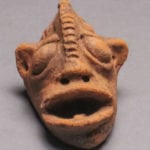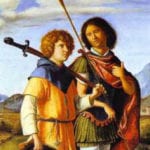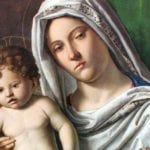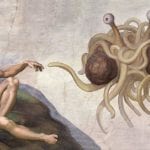 Humans
Humans  Humans
Humans  Movies and TV
Movies and TV The 10 Most Heartwarming Moments in Pixar Films
 Travel
Travel Top 10 Religious Architectural Marvels
 Creepy
Creepy 10 Haunted Places in Alabama
 History
History Top 10 Tragic Facts about England’s 9 Days Queen
 Food
Food 10 Weird Foods Inspired by Your Favorite Movies
 Religion
Religion 10 Mind-Blowing Claims and Messages Hidden in the Bible Code
 Facts
Facts 10 Things You Never Knew about the History of Gambling
 Weird Stuff
Weird Stuff 10 Cool and Creepy Facts about Collecting Tears
 Humans
Humans The Ten Most Lethal Gunslingers of the Old West
 Humans
Humans Ten Historic Men Who Deserve Way More Credit Than They Got
 Movies and TV
Movies and TV The 10 Most Heartwarming Moments in Pixar Films
 Travel
Travel Top 10 Religious Architectural Marvels
Who's Behind Listverse?

Jamie Frater
Head Editor
Jamie founded Listverse due to an insatiable desire to share fascinating, obscure, and bizarre facts. He has been a guest speaker on numerous national radio and television stations and is a five time published author.
More About Us Creepy
Creepy 10 Haunted Places in Alabama
 History
History Top 10 Tragic Facts about England’s 9 Days Queen
 Food
Food 10 Weird Foods Inspired by Your Favorite Movies
 Religion
Religion 10 Mind-Blowing Claims and Messages Hidden in the Bible Code
 Facts
Facts 10 Things You Never Knew about the History of Gambling
 Weird Stuff
Weird Stuff 10 Cool and Creepy Facts about Collecting Tears
 Humans
Humans The Ten Most Lethal Gunslingers of the Old West
10 Fascinating Interpreters Who Changed History
The gift of gab has been invaluable throughout history, with interpreters playing a key role in war and peace throughout the ages. Often they simply fade into the background, but not always. Here are 10 interpreters that had great influence on the world.
10 Thomas Pereira & Jean-Francois Gerbillon
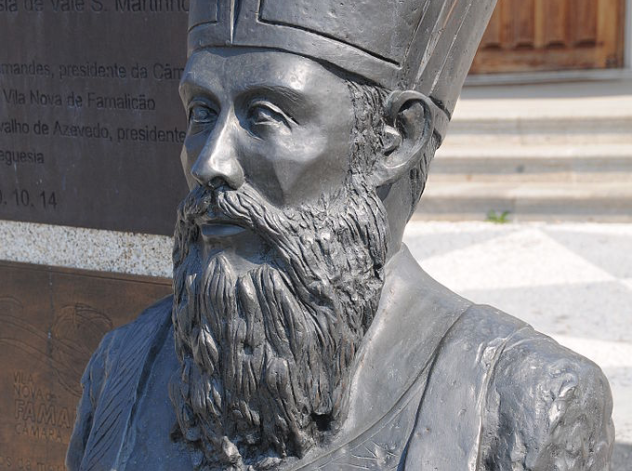
In the 17th century, Jesuit missionaries were a crucial link between the West and the Qing dynasty, as the Chinese emperors valued them for their scientific knowledge and linguistic skills. At that time, there were tensions between the Portuguese Jesuits, who had arrived first, and the French Jesuits, who arrived later and in greater numbers to break the Lusitanian monopoly. During this period, Russian Cossacks had begun to infiltrate the northern borders of the Qing Empire in search of furs and grain, clashing with border troops and subjugating Siberian tribes which were tributaries of Beijing.
When the Kangxi emperor chose Portuguese Jesuit Thomas Pereira (pictured above) as an interpreter between the Qing court and the Russians and ordered him to bring a companion, Pereira chose the Frenchman Jean-Francois Gerbillon despite the intra-Jesuit tensions. The Jesuits were chosen because the most convenient lingua franca between the Russians and the Chinese was actually Latin. During the negotiations, the Russians altered the wording of the provisional treaty, telling the Jesuits: “You need not tell the Chinese delegates all the details, the treaty was written in Latin and the Chinese would know nothing at all.” Pereira and Gerbillion refused to pull the wool over the Kangxi emperor’s eyes.
In the resulting Treaty of Nerchinsk, the first treaty signed between a Chinese emperor and any other nation, the Russians agreed to stay north of a line running from the Sayan Mountains to Lake Okhotsk, keeping them out of the traditional Manchu homelands of the Amur basin. The treaty gave the Jesuits a land route from Europe to China that avoided the seas teeming with hostile Dutch ships, and they also gained the trust of Prince Songgotu, who credited the Jesuits for the end of war with Russia. The Manchu gratitude was a factor in the imperial decree of 1692 that granted tolerance for Christians in China.
9 Alexander Burnes
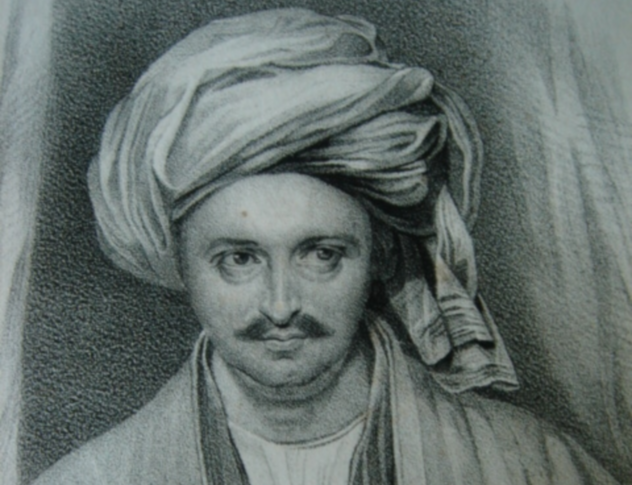
A Scotsman with a natural gift for languages, Alexander Burnes immediately threw himself into the study of Hindustani and Persian after arriving in Bombay as an appointed ensign in 1821. He rose quickly through the ranks of the Indo-British administration and was appointed assistant to the Resident in Kutch, Henry Pottinger. Burnes was sent on an expedition up the Indus, the first by a Western power since Alexander the Great, in the hopes of opening those waters up to Western shipping. Rather than British troops, he took a retinue of Balochi tribesmen to conceal his purposes, and after a successful journey of 1,600 kilometers (1,000 mi), he returned to Lahore to significant acclaim.
His second mission took him through Afghanistan, Turkestan, and Iran, his account of which was entitled Travels into Bokhara, being an Account of a Journey from India to Cabool, Tartary and Persia. In 1836, Burnes was dispatched on a commercial mission to Kabul, where he was warmly welcomed by Dost Muhammad Khan, with whom he was on good terms after a previous meeting. Burnes wished to offer Khan British support, but the Amir’s independence was mistrusted, and the ineffectual ex-Amir Shah Shuja was restored to the throne of Afghanistan, with William Hay Macnaghten named as chief envoy.
Knighted but politically stuck as a second fiddle without much to do, Burnes made a bad reputation for himself by womanizing and throwing extravagant parties at his Kabul residence. Eventually, his home was surrounded by an angry mob and torched. Burnes was initially convinced that the Afghans would not hurt him, but while fleeing in a turban and robes, he was caught in the streets and hacked to death, the beginning of a massacre of British and Indian troops in Kabul. His will caused some controversy and embarrassment for his family, with the instructions: “I charge my father to find out a poor unfortunate misled girl whom I know in London and give her 200 pounds . . . The ‘nom de guerre’ of the poor demoiselle is ‘Emma Graham’ but this is not her true name. The mode of life will soon end her days and this legacy, if she be spared, must be paid.”
8 Estevanico

Born in North Africa at the dawn of the 16th century, the man known as Estevanico was probably the first Muslim to set foot in North America. Growing up in the lush Oum er Rbia region of Morocco, which was bitterly fought over by the Berbers and Portuguese, the black Moor was enslaved. By 1527, he was the property of Castilian nobleman Andres Dorantes, and he was given a Christian name, Estevanico, probably as a way to make his enslavement legal according to the laws of Spain’s Queen Isabella.
Dorantes and Estevanico joined an expedition to explore and conquer from the border of New Spain to Florida with conquistador Panfilo de Narvaez. Dorantes was a captain on this expedition, which was bound originally for the Panuco River on the western coast of the Gulf of Mexico but ended up, due to bad conditions and inept piloting, coming to shore near Tampa Bay. A five-month death march through the swamps ensued, plagued with disease and attacks by natives. After the ships offshore lost sight of the land expedition, Narvaez tried to build rafts to float to Mexico. These proved impossible to keep together, and most of the expedition drowned.
Estevanico and Dorantes were among 80 men who washed up on Galveston Island off the coast of Texas. When they went to the mainland to look for New Spain, they ended up being captured by Native Americans and held for six years. After escaping soon after the arrival of another shipwrecked Spaniard, the group spent two years on a trek to Mexico, posing as healers and spiritual leaders. During this trek, the Spaniards noted Estevanico had a knack for communicating with the native population through hand signals and words. He and his companions dressed as natives, and Estevanico carried two sacred gourds and an engraved copper rattle, which gave him legitimacy as a shaman. He also dressed in feathers, bells, and turquoise that he had received as gifts for his healing.
When they finally returned to Mexico, Dorantes sold Estevanico to Viceroy Antonio Mendoza, who dispatched him to help guide another expedition in search of rumored cities of gold to the north. The expedition was ostensibly led by the friar Fray Marcos, but it was Estevanico that truly headed it, flanked by two massive Spanish greyhounds and with feathers and bells on his arms and legs. He was disliked by the friars for his license with women and comfortable communication with the locals, and he soon fell victim to overconfidence. Marching ahead of the expedition, he offended a village of Zuni Pueblos by carrying items from an enemy tribe and was imprisoned with his entourage while the Zuni elders debated whether to respect him as a wizard or kill him as a spy. Desperate for water and trying to reach a nearby river, Estevanico was killed by Zuni archers, and the rest of the expedition slunk back to Mexico. Some, however, believe he faked his death in order to live freely among the natives, and the Zuni spirit Chakwaina, depicted with a black face or mask, is believed to be based on Estevanico.
7 Tisquantum
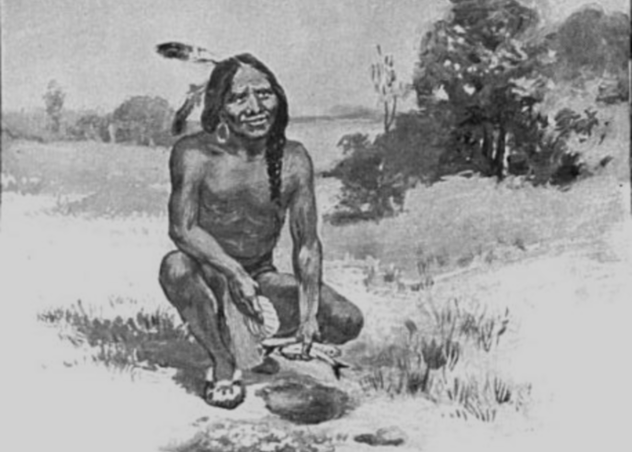
Popularly known as Squanto, this man was among the 24 Nauset and Patuxet tribesmen who were lured aboard a ship by a dishonest English trader named Thomas Hunt in 1615, under the assumption of trading beaver pelts, only to be imprisoned below-deck and transported to Malaga, Spain, to be sold as slaves. Hunt’s plan was foiled when Spanish friars discovered that he was selling American natives. They took custody of those who remained and instructed them in Christianity, while the Nauset and Patuxet around Plymouth and Cape Cod were outraged by the ruse and became hostile, attacking and burning a hapless French ship in 1617. Over the following years, however, a virulent plague, possibly a combination of tuberculosis and smallpox, raged through the area, wiping out the village of Patuxet.
By then, however, Tisquantum had somehow managed to get to London, where he learned English and took up lodging with John Slaney, the treasurer of the Newfoundland Company. Slaney employed Tisquantum as an interpreter and local expert and dispatched him to the Newfoundland colony. There, Tisquantum came into contact with Thomas Derme, a New England Company man who hoped to resolve hostilities with the local tribes. Setting off in 1619 to make peace with the Native Americans of New England, they discovered the abandoned ruins of Tisquantum’s village; Tisquantum made contact with the heads of the Wampanoag Confederation and joined their community. Dermer continued on his peace mission and was captured by the still-hostile Nauset. Tisquantum came to his rescue, but Dorne was attacked again after he headed south alone. He died of his wounds in Virginia.
Tisquantum stayed where he was and was around for the arrival of the Mayflower in November 1620. The Pilgrims had been attacked by the Nauset when sending out exploration parties and decided to settle in the abandoned Patuxet territory, which they named Plymouth. After spending the winter setting up their colony with little sign of native activity, the Pilgrims were surprised when a native named Samoset walked in and told them in broken English, which he had picked up from fishermen, about Tisquantum. After arranging a peace treaty that finally placated the Nauset, Tisquantum became a crucial link between the Pilgrims and the Wampanoag Confederation, acting as intermediary, trade advisor, and guide, as well as teaching the Pilgrims how to catch eels and plant corn.
However, power went to Tisquantum’s head. He began to use the native fear of English disease and guns and the English fear of native attacks to extract tributes and benefits from both sides. Wampanoag leader Massasoit furiously demanded that Tisquantum be handed over for execution, but he was saved by the sudden arrival of a new shipload of colonists. As Tisquantum’s interpreting skills were vital for dealing with the new arrivals, he avoided death. But this didn’t last long; he died after suffering a sudden nosebleed during a corn seed trading trip in Cape Cod in 1622. If not for Tisquantum’s very particular set of skills, the Pilgrim colonies may not have survived at all.
6 Karl Gutzlaff
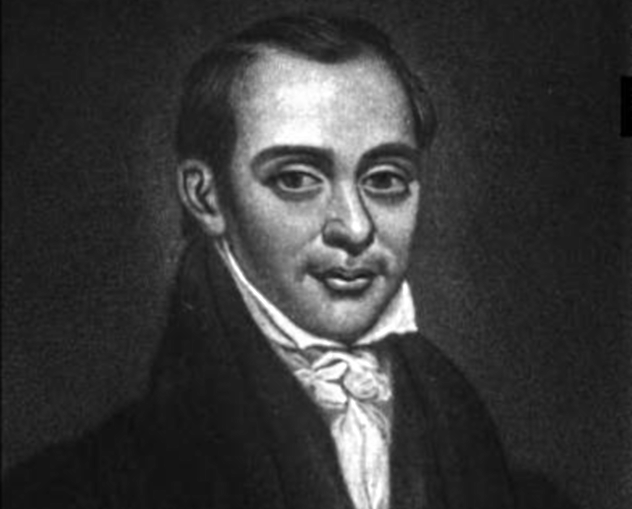
The son of a Dutch tailor, Karl Gutzlaff became a missionary in Siam (Thailand). There, he learned Thai and the Chinese Fujian dialect, translated the New Testament into Thai, and then went to Batavia (Jakarta), where he learned Malay and some other Chinese dialects. Obsessed with China, he went on several expeditions to the southern Chinese coast in the 1830s, distributing Christian literature. In 1834, he became an interpreter and secretary for the East India Company in Guangzhou, where he translated the Gospel of John and the Epistles of John into Japanese with the help of three Japanese sailors who had drifted across the Pacific to Cape Flattery and were then sent to Macau by the Hudson Bay Company.
Gutzlaff helped negotiate the Treaty of Nanjing from 1842–43 and then settled in Hong Kong. He was frustrated by Chinese restrictions on Western entry into the hinterland, which interfered with the task of evangelizing, so he formed the Chinese Union, an evangelical organization, in 1844. The mission was to train Chinese Christians to work as evangelists to preach in Guangdong, with the goal of creating Christian groups in every province, linked with partner organizations in Europe, to spread the Good Word throughout the Middle Kingdom. He reported thousands of converts and testaments distributed, and made a triumphant tour of Europe promoting the Chinese Union.
Gutzlaff’s dreams were dashed, however, when it was discovered that many of the supposed preachers whom he was paying through the Chinese Union were in fact opium smugglers, who were ripping him off by lying to him about their success and then selling his evangelical materials back to the printer, which were then sold back to him. After being exposed by other Hong Kong missonaries who were jealous of his success, Gutzlaff’s reputation was ruined, and he died in 1848 before he could salvage the situation. But the legacy of his work would inspire the famous missionary J. Hudson Taylor, whose China Inland Mission avoided Gutzlaff’s mistakes and became much more successful. Later missionaries inspired by his work would benefit from his reputation among the Chinese as an honest negotiator and just arbiter that respected their culture.
5 Sarah Winnemucca
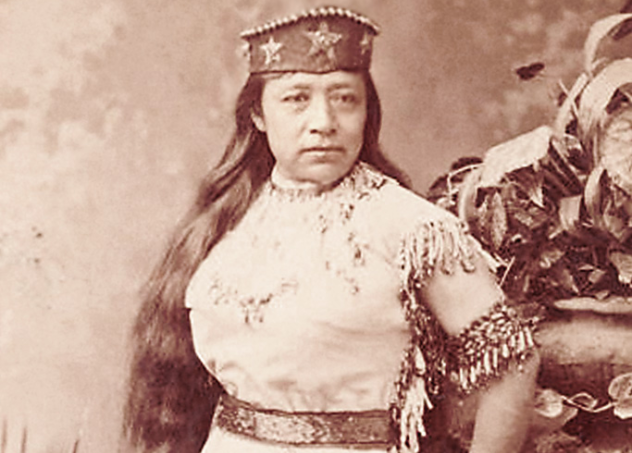
Born around 1844 to the Paiute tribe in eastern Nevada, Sarah Winnemuca’s real name was Thoc-me-tony, meaning “Shell-flower.” Her grandfather, Truckee, believed in peaceful coexistence with the whites, while Winnemucca herself had misgivings. Nevertheless, she accompanied her mother and grandfather to California, where she worked for white families and picked up English and Spanish, as well as an understanding of white culture. She and her sister Elma attended a Roman Catholic school until the parents of other students objected to their presence. They were forced to leave, but Sarah continued to develop her linguistic skills.
In 1866, she went with her brother, Natchez, to Fort McDermit, either at the request of the Paiutes to help stop white raiding, or on the orders of the Army to explain Paiute unrest. Winnemucca would become an intermediary between the military and the Paiutes, convincing her father’s band to settle on a reservation and serving as a liaison during the 1878 Bannock War. She preferred the military over government agents and missionaries, saying:
Is there not good reason for wishing the Army to have care of the Indians, rather than the Indian Commissioner and his men? The Army has no temptation to make money out of them, and the Indians understand law and discipline as the Army has them; but there is no law with agents. The few good ones cannot do good enough to make it worth while to keep up that system. A good agent is sure to lose his place very soon, there are so many bad ones longing for it.
After the end of the Bannock War, Winnemucca became enraged by mistreatment of Pauite captives and launched a campaign of lectures in San Francisco, Nevada, and the East Coast, even traveling to Washington, DC, to plead with the government to reform the system of corrupt agents, callous missionaries, and failing policy. Despite meeting with Secretary of the Interior Schurz and President Hayes, the government failed to deliver any assistance, and a movement to discredit her emerged despite support from the military, the Unitarians, and some sympathetic officials.
During this period, she wrote her autobiography, Life Among the Piutes, a colorful and personalized account of white-Pauite relations. It included her own stories of childhood terror of white people, whom she thought looked like owls, and being buried with her sister in the ground up to their heads by her parents, who feared the whites wanted to cannibalize the children. She died in 1891, having spent some of the last years of her life working in a school in Nevada, where she taught Paiute children to respect their native traditions while learning the language and culture of the whites. She left behind a legacy as one of the most significant fighters for Native American rights in the 19th century.
4 Boubou Penda

In 1897, French administrator Ernest Noirot took over control of the Juta Fallon region of Guinea, a formerly independent region taken over by the French through a combination of dodgy treaties and political interference. He brought with him a young man named Boubou Penda, whom he had met working as a houseboy in Senegal and took a liking to. Boubou progressed from being a servant to Noirot’s invaluable interpreter, later becoming his close and trusted confidante. As Noirot rose in power, Boubou also accrued great power and influence, with Noirot seemingly convinced the ex-slave was of noble blood and even referring to him as his own son.
This relationship scandalized the European and African communities alike, with one French official later testifying, “The confidence shown by Noirot for Boubou was . . . notorious. Everyone, Europeans and natives, knew it . . . If you are not in the good graces of Boubou, Noirot will not tolerate you.” Noirot even intervened in a fight between Boubou and a group of tirailleurs (African soldiers in the French military), who were angry at Boubou for reporting them for stealing alcohol. Noirot’s intevention in the scuffle scandalized the European community, both for the indignity of having a French resident involved in fisticuffs in the streets, and also for undermining the white colonial hegemony necessary to dominate the region.
Boubou used his influence through Noirot to acquire wealth and power. He was involved in the deposing of local Almamy leader Umaru Bademba and the rise to power of Baba Alumu, a sycophantic minor noble. He was also heavily involved in the slave trade, being particularly interested in acquiring aristocratic women, once even raping and imprisoning a noblewoman who was refused to him. Boubou had told Bademba before Almamy’s fall, “A man who has no fingers cannot milk a cow, but he can upset the calabash that contains the milk. It is like that I will have you deposed and chase you from the country. You will live like a monkey in the bush.” Eventually, Boubou’s brutal activities began to cause depopulation in the area, and a reform-minded governor named Frezouls arrived to put a stop to things. Noirot was suspended, Boubou Penda was arrested and then vanished, and the whole matter became the subject of a serious scandal in France.
3 Gaspar Antonio Chi
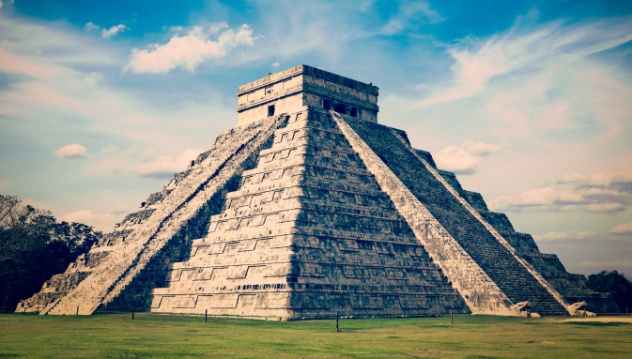
Born the son of a Xiu Mayan noble in 1530, Gaspar Antonio Chi would grow to see the world of his ancestors turned upside-down and find an influential place for himself in the new order. His father, Ah Kulel Chi, who had met previously with a group of Spaniards exploring the Yucatan, was murdered while on an embassy and pilgrimage from their hometown of Mani to Chichen Itza to perform rain rites. Promised safe passage by their rivals, the Nachi Cocum, they were massacred when they let their guard down.
The next few years saw the horrors of war, continued drought, and the spread of disease, until one day a mixed force of Spaniards, Africans, and Aztecs walked into Mani and took the place over. They were followed by a group of Franciscan monks, who were seeking to Christianize the natives. The Franciscans gave Chi his Christian name and taught him Spanish, Latin, and Nahuatl. His skill for languages (and a knack for singing Spanish cantos and playing the organ), made Chi stand out, and he became a prized interpreter. He attended a Spanish-mediated summit between the Cocum and the Xiu in 1557. He became invaluable to the Spanish for his language and cultural knowledge and to the Maya for defending them in lawsuits and organizing petitions for their interests.
Chi was in an unenviable position, stuck between his Mayan people, the rabidly proselytizing Franciscan monks, and the expanding reach of the secular Spanish authorities. In 1562, Chi served as interpreter for an extirpation campaign by the bishop Landa. This campaign was aimed at stamping out idolatry in Mani and saw the arrest and torture of thousands of Maya, culminating in an auto-da-fe in Mani plaza where the condemned had their heads shaved, were forced to wear yellow red-crossed robes of shame, and were lashed, fined, or forced to serve as indentured laborers for Spaniards. Mayan sacred books were burned in the streets.
Chi ended up working as the interpreter for the newly appointed Bishop of Yucatan in Merina. Perhaps as penance for his role in the horrors of 1562, he dedicated much of the rest of his life to recording the history of the Yucatan before the conquest, helping the Mayan nobility to adapt to the Spanish colonial system, criticizing the negative influence of the Spanish social and economic system on the Mayan people, and helping to defend them in legal cases.
2 Felipe

Born on the island of Puna off the coast of the Inca Empire, the young man known as Felipe was captured by the Spanish and employed as an interpreter for the conquest of Peru. This was unfortunate, as Felipe was not fluent in the Quechua language of the Incas nor in Spanish, though he picked up both languages rather impressively without any formal instruction by listening to people speak.
He made frequent mistakes, including botching a description of the Holy Trinity by translating “God is three in one” as “God said ‘three and one is four,’ ” which is true but rather less profound. What’s worse, the only way he knew how to express the concept was by reference to quipu, Inca knot record-keeping, as there were no Quechua words for Christian concepts like trinity, faith, or holy spirit, or if there were, Felipe wasn’t likely to pick them up from listening to traders haggling in port markets. His confusion is even more understandable considering that while he was baptized into the Christian faith, he was never actually instructed in its finer details. Felipe was said to be such a bad interpreter that the Inca Atahualpa was said to have needed to speak slowly and in short sentences in order to be understood, using the Chinchasuyu dialect, rather than the Cuzco dialect, which Felipe was less familiar with.
This consideration didn’t make any impressions; Felipe is said to have arranged the death of Atahualpa, after falling in love with one of the women from his harem, Cuxirimay, whose name meant “very fair skinned and beautiful.” When Atahualpa complained of not being set free by the Spanish even after paying a ransom, and that he should at least be able to eat and drink with his subjects, Felipe told the Spanish that Atahualpa was planning to escape and join forces with his last remaining general, Ruminavi, at Quito to lead a new campaign against the foreign occupiers. Pizarro, fearful of rebellion, had Atahualpa baptized, garroted, burned at the stake, and then given a solemn funeral. Whether Felipe made off with the fair Cuxirimay is unknown.
1 Constantine Phaulkon
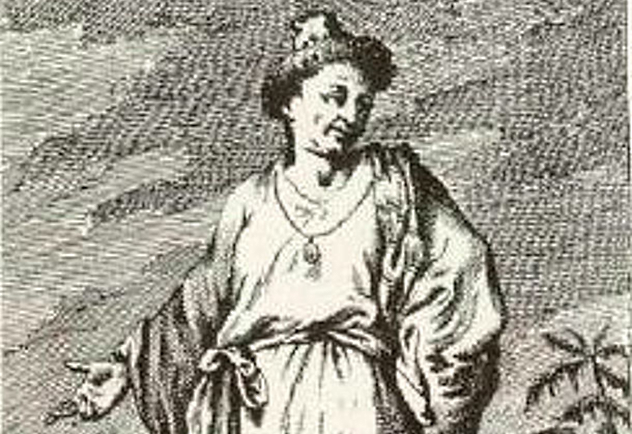
The son of a Greek innkeeper, Constantine Phaulkon arrived in Siam in 1678 with English merchants. He was first employed as an interpreter for the British East India Company, helping to undermine Dutch interests, before winning a job with the Siamese civil administration at the capitol, Ayutthaya. His skills in interpretation, translation, and accounting led him to rise quickly in the ranks.
Among his feats that impressed the Siamese court, he reduced the transport costs of an embassy to Persia and dealt adroitly with the issue of English debts. He was offered the position of phrakhlang, the highest civil posting, which he declined in favor of an advisory role that put him in a position to control the royal treasury without creating political enemies. Phaulkon ended up such a close adviser to King Narai that he became essentially the second-most powerful man in Siam. Given the title of “Superintendent of Foreign Trade,” he wielded great influence over the country’s foreign policy.
After converting to Roman Catholicism and being accused of corruption by the English, Phaulkon tried to push Siam to ally with France. In a conspiracy with the French Jesuits, he tried to convince Narai to convert to Christianity and even got the French to send conversion missions. They gained some trade concessions but didn’t get the Siamese to give up Buddhism. King Narai instead sent a letter to the French king saying that God likes diversity and wants to be prayed to in different ways.
Phaulkon ended up irritating most of the foreign powers with interests in Siam, with an East India Company man calling him “the notorious, ungrateful, naughty man” and the French describing him as possessing “insatiable avarice.” He also annoyed officials in Siam as well, and Phaulkon’s number was up when King Narai began to take ill. The free-trading “Wild West” atmosphere of Siam, characterized by swaggering French naval officers, territorial demands, inter-European squabbling, and aggressive proselytizing, had caused the rise of anti-foreign sentiment. An anti-Phaulkon faction formed behind Narai’s foster brother, Phra Phetracha, who was named heir. After Narai’s death, Phaulkon was arrested and beheaded, and the Siamese adopted a more hostile position toward foreigners that would last until the 19th century.
David Tormsen thinks Estevanico’s story could be a Tarantino movie, and Felipe’s story would be an amazing comic farce. Send your death offers and job threats to [email protected].


